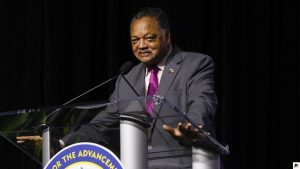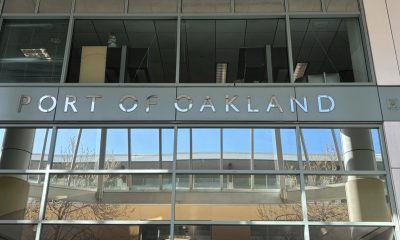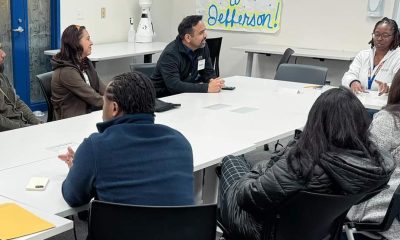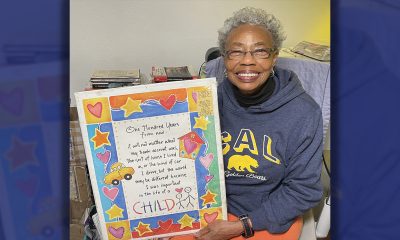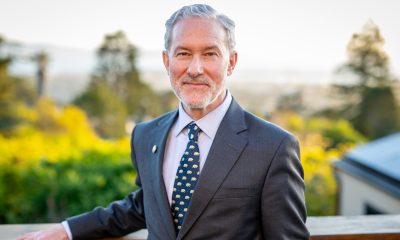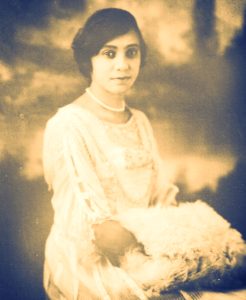#NNPA BlackPress
PRESS ROOM: 81 Grassroots Organizations Awarded a Total of $750,000 in Grants through Industry’s ‘Make Golf Your Thing’ Diversity, Equity & Inclusion Initiative
NNPA NEWSWIRE — The grant program is part of the industry’s broader commitment to making the sport more inclusive for all. Last month, a new Make Golf Your Thing search directory was launched for consumers, consisting of more than 8,400 registered golf programs and organizations across the U.S.
The post PRESS ROOM: 81 Grassroots Organizations Awarded a Total of $750,000 in Grants through Industry’s ‘Make Golf Your Thing’ Diversity, Equity & Inclusion Initiative first appeared on BlackPressUSA.

ST. AUGUSTINE, Fla. – 81 grassroots golf organizations will receive a total of $750,000 in funding to further their efforts to engage underrepresented populations of the sport. These groups (*full list below) are being awarded with a grant through Make Golf Your Thing, the industry’s commitment to advancing diversity, equity and inclusion in making the sport more welcome for all.
Initially introduced in 2021 (by the Make Golf Your Thing youth & adult player development work group), the grant program to date has provided 155 grants to 111 unique grassroots organizations, totaling more than $1 million overall (May 2021: 43 grants totaling $150,000; Jan. 2022: 31 grants totaling $150,000).
The program was established to support organizations dedicated to increasing participation among golf’s underrepresented populations (i.e., Black, Latinx, Asian, Indigenous communities, as well as women, LGBTQI+ individuals, veterans, and individuals with disabilities).
“When the game comes together and pools every resource to grow and broaden the reach of the game, only great things can happen,” said Mike Whan, CEO of the USGA and executive sponsor of the youth & adult player development work group for Make Golf Your Thing.
“This unifying movement is helping to make a difference in communities across America and advance the game in ways none of us can do alone.”
“Access to golf in a business context is a pathway to opportunity,” said Anna Alvarez Boyd, co-founder of FairWays to Leadership (one of the 81 grant recipients).
“Our group’s mission is to increase diversity in business and in golf by teaching college students from diverse backgrounds the skills they need to become effective leaders. The financial commitment of the grant program to organizations like ours will only further golf’s collective efforts to bring new and diverse audiences into our sport.”
The grant program is part of the industry’s broader commitment to making the sport more inclusive for all. Last month, a new Make Golf Your Thing search directory was launched for consumers, consisting of more than 8,400 registered golf programs and organizations across the U.S.
The directory allows individuals to search for programs and events using filters such as location, age, ability, gender, etc., giving new and diverse audiences an opportunity to become more engaged in the sport through programs in their own community.
Formally launched in May 2021, Make Golf Your Thing is the industry’s movement to make golf accessible to individuals from all backgrounds.
Led by six cross-industry work groups, the initiative is specifically focused on: education & skill development, talent acquisition, procurement, human resources, youth & adult player development, and marketing/communications.
Funding for the grant program is being administered by the American Golf Industry Coalition, a partnership among golf’s leading organizations to promote and advocate for the collective interests of the sport.
Financial support for the program is led by a contingent of industry supporters committed to making the sport more welcoming and inclusive for all.
About Make Golf Your Thing
A multi-faceted, multi-year movement, Make Golf Your Thing is a collaborative effort across the industry to invite more people to golf from all backgrounds.
Six cross-industry work groups are committed to making the sport more diverse, equitable and inclusive, with a specific focus on: education & skill development, talent acquisition, procurement, human resources, youth & adult player development, and marketing/communications. For more, www.makegolfyourthing.org.
About the American Golf Industry Coalition
The American Golf Industry Coalition advocates on behalf of golf’s diversity, equity and inclusion efforts; environmental and sustainability initiatives; contributions to the economy (local and national); health and wellness benefits, as well as charitable giving.
The organization unites the golf industry in pursuit of goals designed to enhance the vitality and diversity of both the business and recreational levels of the sport. The American Golf Industry Coalition is a division of the World Golf Foundation.
To learn more, visit www.golfcoalition.org.
| Grassroots Organization | City/Town | State |
| A Perfect Swing Foundation Inc. | Charlotte | NC |
| Adaptive Golfers | North Myrtle Beach | SC |
| Annika Foundation | Orlando | FL |
| Be Counted On Foundation | Gahanna | OH |
| Black College Golf Coaches Association | Vestavia | AL |
| Button Hole | Providence | RI |
| Cameron Champ Foundation | Citrus Heights | CA |
| CitySwing Foundation | Washington | D.C. |
| County of Los Angeles Department of Parks and Recreation | Alhambra | CA |
| DC on the Green | McKinney | AL |
| Edu-Sports Academy | Willingboro | NJ |
| El Dorado High School Golf Team | El Paso | TX |
| Excel Youth Academy | Lawrenceville | GA |
| FabNewport, Inc | Newport | RI |
| FairWays to Leadership, Inc. | Orlando | FL |
| First Tee – Central Florida | Orlando | FL |
| First Tee – Central Mississippi | Flowood | MS |
| First Tee – Greater Charleston | Mt. Pleasant | SC |
| First Tee – Greater Richmond | Richmond | VA |
| First Tee – Greater Sacramento (Sacramento Area Youth Golf Association) | Sacramento | CA |
| First Tee – Greater Trenton | Trenton | NJ |
| First Tee – Greater Tyler | Bullard | TX |
| First Tee – Greater Washington, DC | Washington | D.C. |
| First Tee – Greater Wichita | Wichita | KS |
| First Tee – Indiana | Indianapolis | IN |
| First Tee – Jersey Shore | Point Pleasant | NJ |
| First Tee – North Florida (Rising Leaders of North Florida, Inc.) | St. Augustine | FL |
| First Tee – Omaha (Hogan’s Junior Golf Heroes) | Omaha | NE |
| First Tee – Pittsburgh | Pittsburgh | PA |
| First Tee – Southeastern New Mexico | Roswell | NM |
| First Tee – Tennessee | Knoxville | TN |
| First Tee – Triangle | Raleigh | NC |
| First Tee – Tulsa (Youth Development of Tulsa) | Tulsa | OK |
| First Tee – West Michigan (Lake Michigan Junior Golf Association) | Kentwood | MI |
| Fore Life Inc. | Lauderhill | FL |
| Fore the Ladies | Sylvania | OH |
| Future Successors | Atlanta | GA |
| Gator Junior Golf Association | Gainesville | FL |
| Girls Golf of America, Inc. | Greensboro | NC |
| Golf. My Future. My Game. | Washington | D.C. |
| Greater Cleveland Junior Golf Scholarship Fund | Bedford | OH |
| Harris Park Midtown Sports & Activity Center | Kansas City | MO |
| Hi-Tee Junior Little League Golf Program | Renton | WA |
| Hit It Straight Golf Academy | Homewood | IL |
| I AM a Golfer Foundation | Dallas | TX |
| iGolf4VETS, Inc. | Riverview | FL |
| Inland Golf Academy | Riverside | CA |
| Inner City Youth Golfers’ Inc. | Palm Beach Gardens | FL |
| Inspiring Greatness In You | Covington | GA |
| Jackson Park Golf Association | Chicago | IL |
| Ladies of Futurity, Inc | West Palm Beach | FL |
| Latina Golfers Association Foundation | Los Angeles | CA |
| Little Linksters | Sorrento | FL |
| Matrix Human Services | Detroit | MI |
| Michigan Women’s Golf Association | Detroit | MI |
| Midnight Golf Program | Bingham Farms | MI |
| Milwaukee Area Youth Golf Academy, Inc. | Glendale | WI |
| Moore-Myers Children’s Fund | Jacksonville | FL |
| My Vision Golf | Fayetteville | GA |
| New Jersey Golf Foundation Inc. | Bedminster | NJ |
| Next 18 | Fox Point | WI |
| Northern Texas PGA Foundation – Fairway to Success | Dallas | TX |
| One Hundred Black Men, Inc. | New York | NY |
| Par Excellence Youth Development | Huntsville | AL |
| Range Fore Hope Foundation | Blythewood | SC |
| Rose Hill Schools | Rose Hill | KS |
| Southern California Golf Association – Junior Golf Foundation | Studio City | CA |
| Southern Area Youth Program, Inc. | Los Angeles | CA |
| Special Olympics Connecticut | Hamden | CT |
| SwingPals, Inc. | Durham | NC |
| Ted Rhodes Foundation, Inc. | Chicago | IL |
| The Caddie & Leadership Academy | Kenosha | WI |
| The Darby Foundation | Lafayette | LA |
| The Glove Foundation | Mobile | AL |
| The Honors Junior Golf Program | Corona | CA |
| The Pinkney Foundation | Pittsburg | CA |
| Upstate-Carolina Adaptive Golf | Greenville | SC |
| Western States Junior Golf Association | Las Vegas | NV |
| Women Golfers Give Back | Plymouth Meeting | PA |
| Women in Golf Foundation, Inc. | Ellenwood | GA |
The post PRESS ROOM: 81 Grassroots Organizations Awarded a Total of $750,000 in Grants through Industry’s ‘Make Golf Your Thing’ Diversity, Equity & Inclusion Initiative first appeared on BlackPressUSA.
#NNPA BlackPress
Beloved Actor and Activist Louis Cameron Gossett Jr. Dies at 87
NNPA NEWSWIRE — Louis Gossett Jr., the groundbreaking actor whose career spanned over five decades and who became the first Black actor to win an Academy Award as Best Supporting Actor for his memorable role in “An Officer and a Gentleman,” has died. Gossett, who was born on May 27, 1936, in Brooklyn, N.Y., was 87. Recognized early on for his resilience and nearly unmatched determination, Gossett arrived in Los Angeles in 1967 after a stint on Broadway.
The post Beloved Actor and Activist Louis Cameron Gossett Jr. Dies at 87 first appeared on BlackPressUSA.

By Stacy M. Brown
NNPA Newswire Senior National Correspondent
@StacyBrownMedia
Louis Gossett Jr., the groundbreaking actor whose career spanned over five decades and who became the first Black actor to win an Academy Award as Best Supporting Actor for his memorable role in “An Officer and a Gentleman,” has died. Gossett, who was born on May 27, 1936, in Brooklyn, N.Y., was 87. Recognized early on for his resilience and nearly unmatched determination, Gossett arrived in Los Angeles in 1967 after a stint on Broadway.
He sometimes spoke of being pulled over by law enforcement en route to Beverly Hills, once being handcuffed to a tree, which he remembered as a jarring introduction to the racial tensions of Hollywood. In his memoir “An Actor and a Gentleman,” Gossett recounted the ordeal, noting the challenges faced by Black artists in the industry. Despite the hurdles, Gossett’s talent shone brightly, earning him acclaim in groundbreaking productions such as “A Raisin in the Sun” alongside Sidney Poitier. His Emmy-winning portrayal of Fiddler in “Roots” solidified his status as a trailblazer, navigating a landscape fraught with racial prejudice.
According to the HistoryMakers, which interviewed him in 2005, Gossett’s journey into the limelight began during his formative years at PS 135 and Mark Twain Junior High School, where he demonstrated early leadership as the student body president. His passion for the arts blossomed when he starred in a “You Can’t Take It With You” production at Abraham Lincoln High School, catching the attention of talent scouts who propelled him onto Broadway’s stage in “Take A Giant Step.” His stellar performance earned him the prestigious Donaldson Award for Best Newcomer to Theatre in 1952. Though initially drawn to sports, Gossett’s towering 6’4” frame and athletic prowess led him to receive a basketball scholarship at New York University. Despite being drafted by the New York Knicks in 1958, Gossett pursued his love for acting, honing his craft at The Actors Studio under the tutelage of luminaries like John Sticks and Peggy Fury.
In 1961, Gossett’s talent caught the eye of Broadway directors, leading to roles in acclaimed productions such as “Raisin in the Sun” and “The Blacks,” alongside legends like James Earl Jones, Cicely Tyson, Roscoe Lee Brown, and Maya Angelou. Transitioning seamlessly to television, Gossett graced small screens with appearances in notable shows like “The Bush Baby” and “Companions in Nightmare.” Gossett’s silver screen breakthrough came with his role in “The Landlord,” paving the way for a prolific filmography that spanned over 50 movies and hundreds of television shows. From “Skin Game” to “Lackawanna Blues,” Gossett captivated audiences with his commanding presence and versatile performances.
However, his portrayal of “Fiddler” in Alex Haley’s groundbreaking miniseries “Roots” earned Gossett critical acclaim, including an Emmy Award. The HistoryMakers noted that his golden touch extended to the big screen, where his role as Sergeant Emil Foley in “An Officer and a Gentleman” earned him an Academy Award for Best Supporting Actor, making him a trailblazer in Hollywood history.
Beyond the glitz and glamour of Hollywood, Gossett was deeply committed to community activism. In 1964, he co-founded a theater group for troubled youth alongside James Earl Jones and Paul Sorvino, setting the stage for his lifelong dedication to mentoring and inspiring the next generation. Gossett’s tireless advocacy for racial equality culminated in the establishment of Eracism, a nonprofit organization dedicated to combating racism both domestically and abroad. Throughout his illustrious career, Gossett remained a beacon of strength and resilience, using his platform to uplift marginalized voices and champion social change. Gossett is survived by his children, Satie and Sharron.
The post Beloved Actor and Activist Louis Cameron Gossett Jr. Dies at 87 first appeared on BlackPressUSA.
#NNPA BlackPress
COMMENTARY: D.C. Crime Bill Fails to Address Root Causes of Violence and Incarceration
WASHINGTON INFORMER — The D.C. crime bill and so many others like it are reminiscent of the ‘94 crime bill, which produced new and harsher criminal sentences, helped deploy thousands of police and surveilling methods in Black and brown communities, and incentivized more states to build prisons through a massive infusion of federal funding. While it is not at the root of mass incarceration, it significantly accelerated it, forcing a generation of Black and brown families into a never-ending cycle of state-sanctioned violence and incarceration.
The post COMMENTARY: D.C. Crime Bill Fails to Address Root Causes of Violence and Incarceration first appeared on BlackPressUSA.

By Kaili Moss and Jillian Burford | Washington Informer
Mayor Bowser has signed the “Secure DC” omnibus bill passed by the D.C. Council last month. But we already know that this bill will be disastrous for all of D.C., especially for Black and brown residents.
While proponents claim that this legislation “will make D.C. residents safer and more secure,” it actually does nothing to address the root of the harm in the first place and instead maintains a cycle of violence, poverty, and broken community ties. The omnibus bill calls for increased surveillance, drug-free zones, and will expand pre-trial detention that will incarcerate people at a significantly higher rate and for an indeterminate amount of time before they are even tried. This bill will roll back decades of nationwide policy reform efforts and initiatives to keep our communities safe and whole, which is completely contradictory to what the “Secure” D.C. bill claims it will do.
What is unfolding in Washington, D.C., is part of a dangerous national trend. We have seen a resurrection of bad crime bills in several jurisdictions across the country — a phenomenon policy experts have named “zombie laws,” which are ineffective, costly, dangerous for communities of color and, most importantly, will not create public safety. Throwing more money into policing while failing to fund preventative measures does not keep us safe.
The D.C. crime bill and so many others like it are reminiscent of the ‘94 crime bill, which produced new and harsher criminal sentences, helped deploy thousands of police and surveilling methods in Black and brown communities, and incentivized more states to build prisons through a massive infusion of federal funding. While it is not at the root of mass incarceration, it significantly accelerated it, forcing a generation of Black and brown families into a never-ending cycle of state-sanctioned violence and incarceration. Thirty years later, despite spending billions each year to enforce these policies with many of these provisions remaining in effect, it has done very little to create long-term preventative solutions. Instead, it placed a permanent moving target on the backs of Black people, and the D.C. crime bill will do the same.
The bill calls for more pretrial detention. When our loved ones are held on pretrial detention, they are held on the presumption of guilt for an indeterminate amount of time before ever seeing a judge, which can destabilize people and their families. According to experts at the Malcolm Weimer Center for Social Policy at Harvard University, just one day in jail can have “devastating consequences.” On any given day, approximately 750,000 people are held in jails across the nation — a number that beats our nation’s capital population by about 100,000. Once detained, people run the risk of losing wages, jobs, housing, mental and health treatments, and time with their families. Studies show that pretrial detention of even a couple of days makes it more likely for that person to be rearrested.
The bill also endangers people by continuing a misguided and dangerous War on Drugs, which will not get drugs off the street, nor will it deter drug use and subsequent substance use disorders (SUDs). Drug policies are a matter of public health and should be treated as such. Many states such as Alabama, Iowa and Wisconsin are treating the current fentanyl crisis as “Crack 2.0,” reintroducing a litany of failed policies that have sent millions to jails and prisons instead of prioritizing harm reduction. Instead, we propose a simple solution: listen to members of the affected communities. Through the Decrim Poverty D.C. Coalition, community members, policy experts and other stakeholders formed a campaign to decriminalize drugs and propose comprehensive legislation to do so.
While there are many concerning provisions within the omnibus bill, car chases pose a direct physical threat to our community members. In July 2023, NBC4 reported that the D.C. Council approved emergency legislation that gave MPD officers the ability to engage in vehicular pursuits with so-called “limited circumstances.” Sgt. Val Barnes, the head of MPD’s carjacking task force, even expressed concern months before the decision, saying, “The department has a pretty strict no-chase policy, and obviously for an urban setting and a major metropolitan city, that’s understandable.” If our law enforcement officers themselves are operating with more concern than our elected officials, what does it say about the omnibus bill’s purported intention to keep us safe?
And what does it mean when the risk of bodily harm is posed by the pursuit itself? On Saturday, Feb. 10, an Eckington resident had a near-miss as a stolen car barreled towards her and her dog on the sidewalk with an MPD officer in pursuit. What responsibility does the city hold if this bystander was hit? What does restitution look like? Why are our elected officials pushing for MPD officers to contradict their own policies?
Just a few summers ago during the uprisings of 2020, we saw a shift in public perspectives on policing and led to legislation aimed at limiting police power after the highly-publicized murders of loved ones Breonna Taylor and George Floyd — both victims of War on Drugs policing and the powers gained from the ’94 crime bill. And yet here we are. These measures do not keep us safe and further endanger the health of our communities. Studies show that communities that focus on harm reduction and improving material conditions have a greater impact on public safety and community health. What’s missing in mainstream conversations about violent crime is the violence that stems from state institutions and structures that perpetuate racial and class inequality. The people of D.C. deserve to feel safe, and that includes feeling safe from the harms enacted by the police.
Kaili Moss is a staff attorney at Advancement Project, a national racial justice and legal organization, and Jillian Burford is a policy organizer at Harriet’s Wildest Dreams.
The post COMMENTARY: D.C. Crime Bill Fails to Address Root Causes of Violence and Incarceration first appeared on BlackPressUSA.
#NNPA BlackPress
Mayor, City Council President React to May 31 Closing of Birmingham-Southern College
THE BIRMINGHAM TIMES — “This is a tragic day for the college, our students, our employees, and our alumni, and an outcome so many have worked tirelessly to prevent,” Rev. Keith Thompson, chairman of the BSC Board of Trustees said in an announcement to alumni. “We understand the devastating impact this has on each of you, and we will now direct our efforts toward ensuring the smoothest possible transition for everyone involved.”
The post Mayor, City Council President React to May 31 Closing of Birmingham-Southern College first appeared on BlackPressUSA.

By Barnett Wright | The Birmingham Times
Birmingham-Southern College will close on May 31, after more than a century as one of the city’s most respected institutions.
“This is a tragic day for the college, our students, our employees, and our alumni, and an outcome so many have worked tirelessly to prevent,” Rev. Keith Thompson, chairman of the BSC Board of Trustees said in an announcement to alumni. “We understand the devastating impact this has on each of you, and we will now direct our efforts toward ensuring the smoothest possible transition for everyone involved.”
There are approximately 700 students enrolled at BSC this semester.
“Word of the decision to close Birmingham Southern College is disappointing and heartbreaking to all of us who recognize it as a stalwart of our community,” Birmingham Mayor Randall Woodfin said in a statement. “I’ve stood alongside members of our City Council to protect this institution and its proud legacy of shaping leaders. It’s frustrating that those values were not shared by lawmakers in Montgomery.”
Birmingham City Council President Darrell O’Quinn said news of the closing was “devastating” on multiple levels.
“This is devastating for the students, faculty members, families and everyone affiliated with this historic institution of higher learning,” he said. “It’s also profoundly distressing for the surrounding community, who will now be living in close proximity to an empty college campus. As we’ve seen with other institutions that have shuttered their doors, we will be entering a difficult chapter following this unfortunate development … We’re approaching this with resilience and a sense of hope that something positive can eventually come from this troubling chapter.”
The school first started as the merger of Southern University and Birmingham College in 1918.
The announcement comes over a year after BSC officials admitted the institution was $38 million in debt. Looking to the Alabama Legislature for help, BSC did not receive any assistance.
This past legislative session, Sen. Jabo Waggoner sponsored a bill to extend a loan to BSC. However, the bill subsequently died on the floor.
Notable BSC alumni include former New York Times editor-in-chief Howell Raines, former U.S. Sen. Howell Heflin and former Alabama Supreme Court Chief Justice Perry O. Hooper Sr.
This story will be updated.
The post Mayor, City Council President React to May 31 Closing of Birmingham-Southern College first appeared on BlackPressUSA.
-

 Activism4 weeks ago
Activism4 weeks agoOakland Post: Week of March 20 – 26, 2024
-

 #NNPA BlackPress3 weeks ago
#NNPA BlackPress3 weeks agoCOMMENTARY: D.C. Crime Bill Fails to Address Root Causes of Violence and Incarceration
-

 #NNPA BlackPress4 weeks ago
#NNPA BlackPress4 weeks agoFrom Raids to Revelations: The Dark Turn in Sean ‘Diddy’ Combs’ Saga
-

 #NNPA BlackPress3 weeks ago
#NNPA BlackPress3 weeks agoMayor, City Council President React to May 31 Closing of Birmingham-Southern College
-

 #NNPA BlackPress4 weeks ago
#NNPA BlackPress4 weeks agoCOMMENTARY: Lady Day and The Lights!
-

 Activism3 weeks ago
Activism3 weeks agoOakland Post: Week of March 27 – April 2, 2024
-

 #NNPA BlackPress4 weeks ago
#NNPA BlackPress4 weeks agoBaltimore Key Bridge Catastrophe: A City’s Heartbreak and a Nation’s Alarm
-

 #NNPA BlackPress4 weeks ago
#NNPA BlackPress4 weeks agoBaltimore’s Key Bridge Struck by Ship, Collapses into Water

